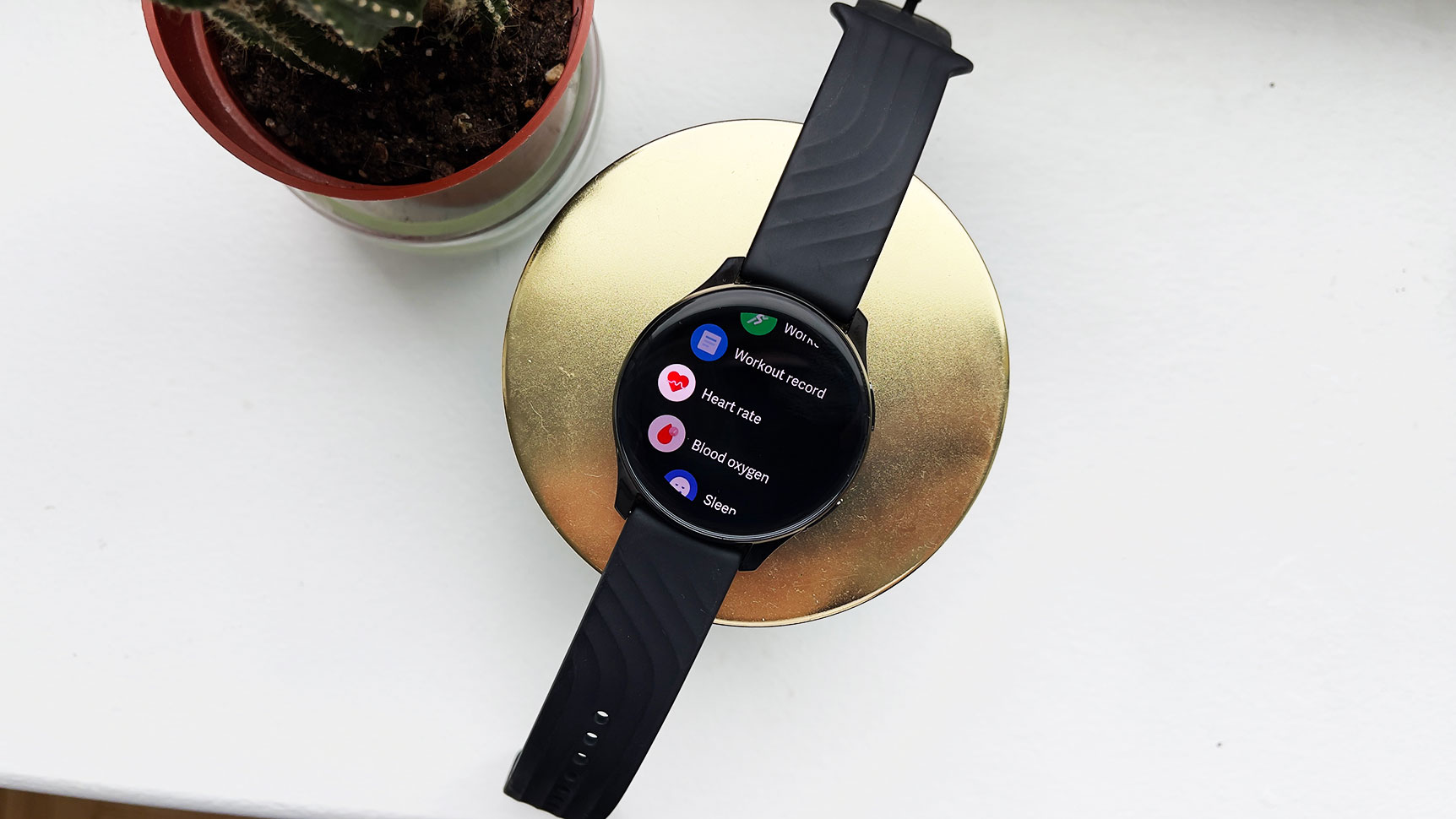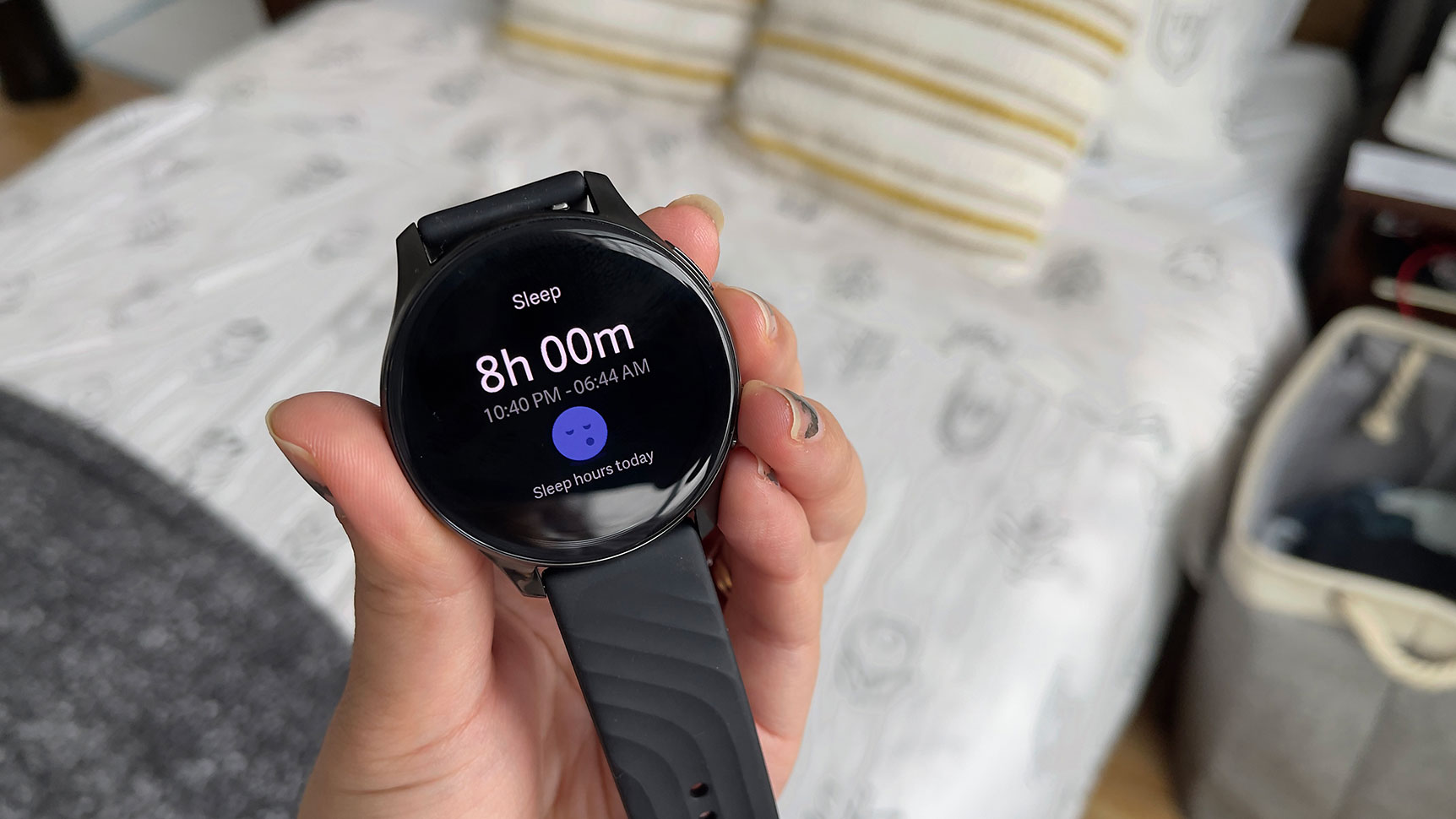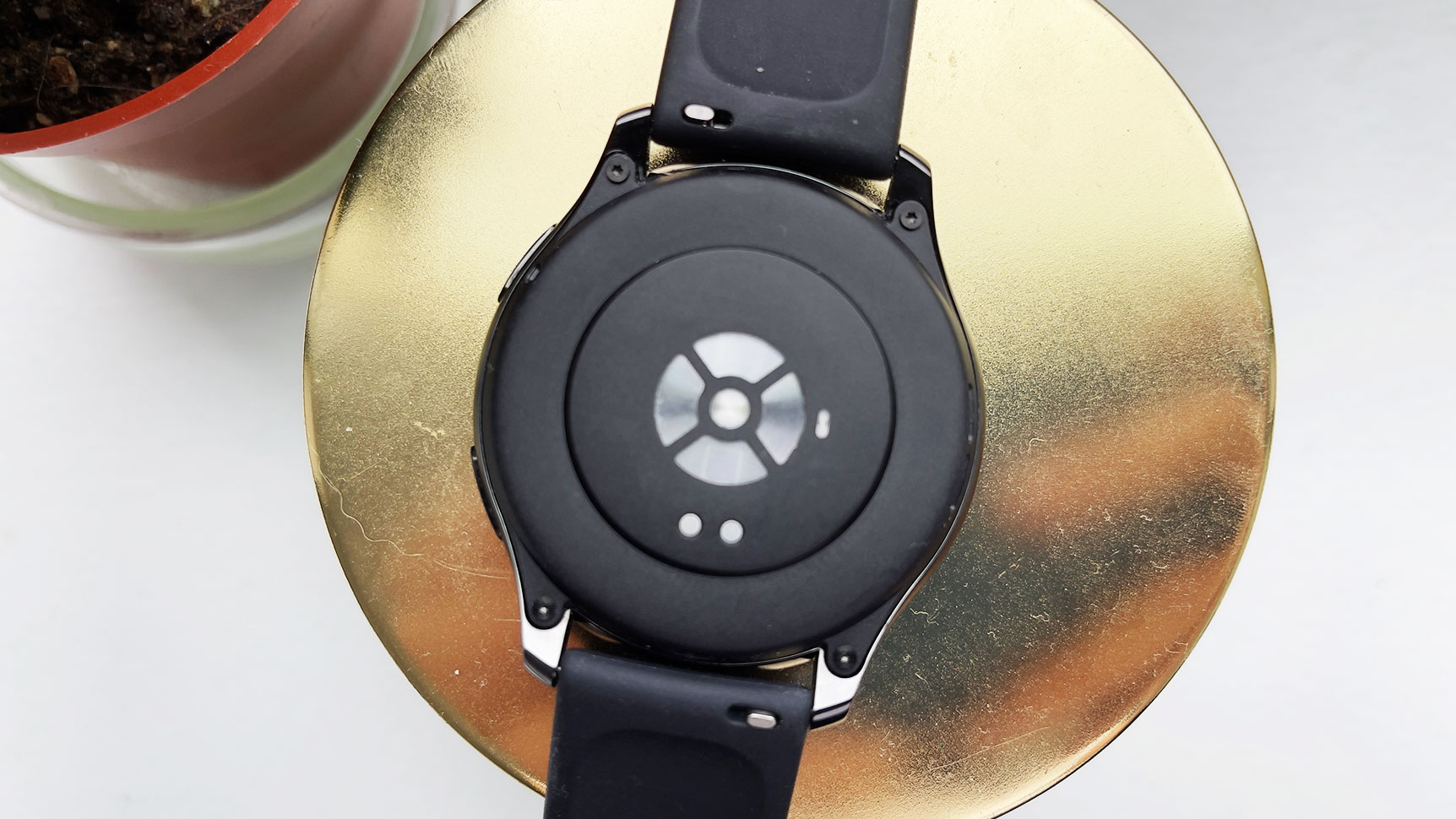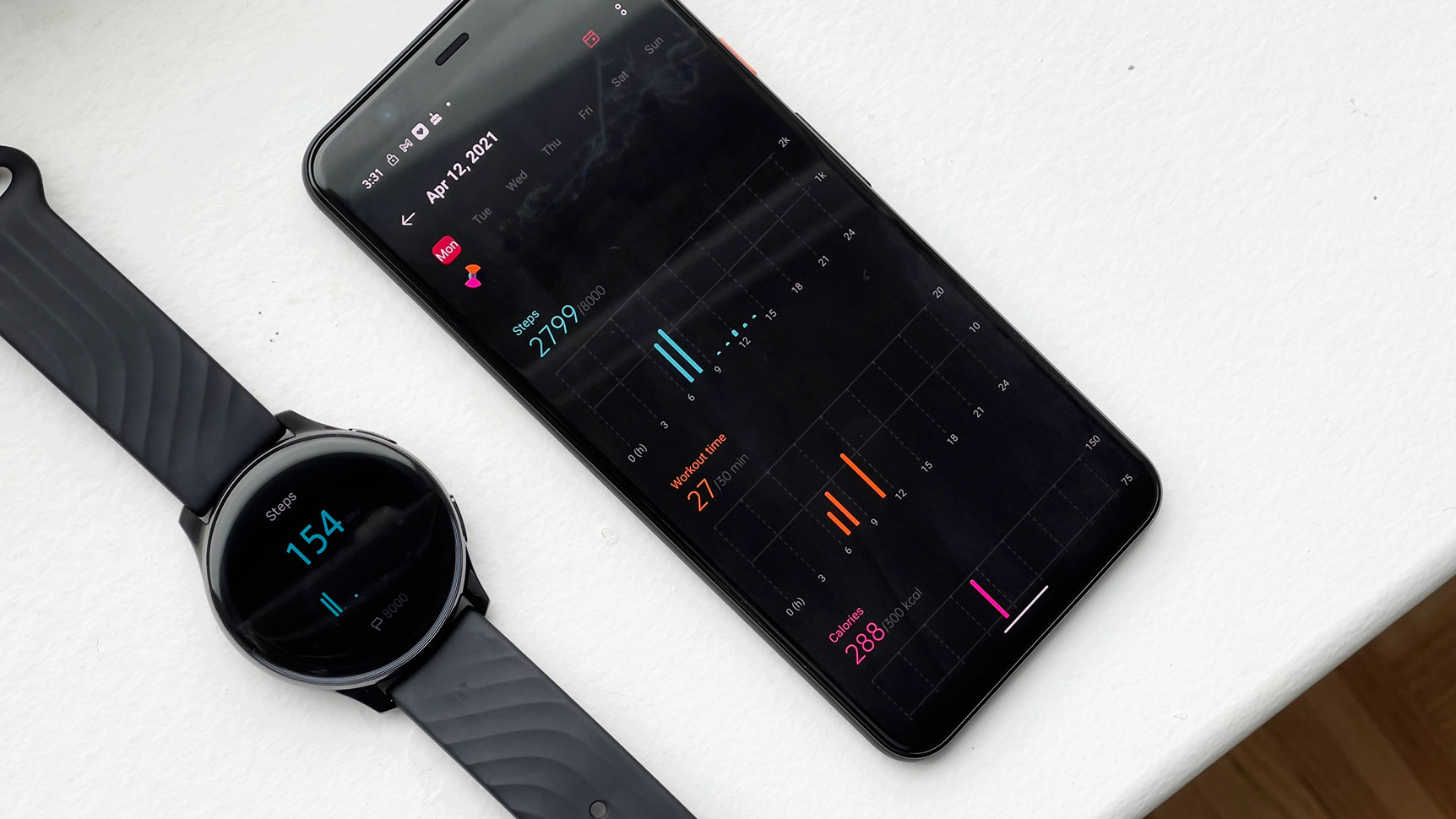It’s rare for a flagship gadget to fail on every single front, and yet the OnePlus Watch has managed to pull it off.
Every little thing went wrong when I tested this watch. It tracked every activity inaccurately. It said I was sleeping when I was awake. My step counts were off by more than 10,000 steps. I changed my measurements to the imperial system, but sometimes it showed me data using the metric system anyway, just for fun. I went to test a marquee feature that the company touted during its announcement, only to find out that actually it wouldn’t be available at launch.
When I sat down to write this review, I wondered if it was too harsh to call this the worst smartwatch ever made. After all, it could at the very least deliver notifications. My wrist then buzzed with the fury of a thousand angry bees as I simultaneously got 40 notifications for emails that were sent four hours earlier. It’s impossible to overstate how bad this smartwatch is at its job.

OnePlus Watch
What is it?
OnePlus' first smartwatch
Price
$US159 ($208)
Like
The screen
No Like
Everything else
Editor’s Note: Stay tuned for local Australian availability and pricing.
From a design standpoint, OnePlus hopes you consider this product the pinnacle of style. It’s not. While it’s not an ugly watch, it has the same nondescript smartwatch design companies default to when they don’t have an original idea. There are two buttons on the side. It has a textured silicone strap that you can swap out. It’s a watch. There’s a better-looking limited edition version, but the only one available in the U.S. is this black-only bore. I’d say it’s inoffensive on the wrist, except for the fact that it also looks like I’m wearing a dinner plate.
With a 46mm case, this is the second-largest smartwatch I’ve tested in recent memory. (Only the Suunto 7 is larger.) This might be fine if you’ve got a larger wrist, or if the strap was more snug. However, even on the smallest hole, I had to push this thing up about four centimetres away from my wrist until it was practically on my forearm. I happen to be pint-sized and my wrists are smaller than average, but my husband isn’t. He’s close to 6 feet tall and has normal-sized wrists, and he said this watch is “uncomfortable and too large.”
I’ll give credit where credit is due. This may be a huge honking screen, but at least it’s a pretty one. The colours are bright. Notifications are easy to read. The bezels are there, but not nearly as egregious as they are on some other watches I’ve tested. The processor is decently snappy, so swipes register quickly with little latency. I’d prefer if it was a little brighter in direct sunlight, but that’s a quibble.
As far as hardware goes, you get 1GB of RAM and 4GB of internal storage. You also get continuous heart rate-monitoring, built-in GPS, an accelerometer, and automatic workout detection. You do miss out on NFC payments and there are no third-party apps, but those are the least of this watch’s problems. If you have the OnePlus TV, you could use the smartwatch as a remote. I do not have the OnePlus TV, so I can’t tell you how well this remote feature works. It doesn’t really matter for anyone in the U.S., because OnePlus TVs are not available here.
On paper, the OnePlus Watch might seem like a plain, slightly too big, but functional watch. If that’s what it was, I’d leave it at that. Unfortunately, the OnePlus Watch is a crime against wearables.

The OnePlus Watch and its companion app fail on a scale that I have never before seen in five years testing and reviewing smartwatches and fitness trackers. But before I get into why, I have to add a disclaimer: OnePlus had reviewers sideload a beta version of the watch’s companion app. This is what I spent the majority of my time testing, but hopefully will not be the final version — at least, it sure as hell better not be if OnePlus wants to maintain a shred of dignity. But I can’t time travel to the future, where the OnePlus Health app works as intended. I can only tell you about my week with this trash fire. At the last minute, OnePlus sent out a patch so I could try the same app as the one consumers get at launch. But a OnePlus spokesperson told me the patch was mostly “slight updates to the health, fitness and manage tabs,” an additional 50 watch faces, and “other fixes.” Due to the short turnaround, I can’t definitively say whether every issue I had was fixed. But my god, there were so many problems that I don’t think it matters much.
For the record, there are two over-the-air software updates planned — one for mid-April that will add sleep-tracking recording and outdoor cycling to the app (you can already do it on your wrist), and another one in mid-May that will add “GPS optimisation” and all of the 110 workout modes OnePlus promised. (The watch has 14 modes ready at launch.)
The one positive thing I can say is that this app “works.” Setting up the watch was easy, the app launches, and you can navigate between menus and metrics. You can easily scroll through the watch’s menus and widgets and launch apps. Everything else is broken.
For starters, I couldn’t fully test the watch’s sleep-tracking feature, because you cannot view sleep-tracking data in the phone app. Nor can you view blood oxygen levels from the watch’s SpO2 sensor. This means although sleep data is recorded on your wrist, you can’t actually view your sleep history on a bigger screen where you might be able to sense some trends. As for accuracy, some nights it was relatively on the mark. Other times it was wildly off. On a night the watch reported that I went to bed at 8 p.m. and got a solid 12 hours of rest, I was actually up all night due to a family emergency. While OnePlus will soon add the ability to view your sleep and SpO2 data in the app, it’s a bizarre exclusion.

The data history you can view, however, is so inaccurate it deserves the Pulitzer Prize for fiction. For instance, on a day I ran three miles and walked an additional 5 km, totaling 15,417 steps on my Apple Watch SE, the OnePlus Watch recorded 103 steps. I’ve seen large gaps in step counts between devices before, but never one that was 15,314 steps off. This was even though the watch itself recorded both those workouts and said I walked 4,301 steps during the 5 km jaunt. The dashboard reported zero minutes of activity — a failure all around.
The workouts themselves were also not recorded accurately. My run registered as 3 km even though my Apple Watch and the MapMyRun app recorded the same run as 5 km and 5 km, respectively. The watch itself also didn’t track the run correctly. And, confusingly, it displayed my distance in kilometers but gave me notifications at each mile. As in, when I hit the 3 km mark, it said I had hit 2 kilometers. Afterward, it said my pace was 6’38” per mile, which is impossible under the laws of physics considering it logged my duration as 34 minutes. It later updated to 17 minutes per mile, but that was also off, as I had done an average of 11’53” that day.
I’d understand if that was one of my speed work or interval runs. Those can sometimes trip up how watches with built-in GPS report pace, especially mid-run (though, only by a little). But that was a slow run on a beautiful clear day. Before the run, the watch had acquired a signal. At no point during the run was I alerted that GPS had dropped out or that it was unable to find a signal. Why, then, do I have zero record of my route and completely bonkers metrics?
Workout-tracking is sometimes wonky, especially if you’re making use of automatic recording features. Anomalies happen. These poor results are not an anomaly. Every single workout I did with the OnePlus Watch was recorded inaccurately. The only thing it ever recorded reliably was the duration.

If it was just the companion app that was the problem, I could throw OnePlus a bone and say that at least the watch itself was good. The reality is the watch just sucks slightly less. It seemed to record my heart rate accurately during workouts and captured spot checks for my SpO2 levels. But I regret to inform you that the watch’s data recording is still a hot mess.
It’s so, so bizarre, because even though the app syncs and gets its data from the watch, often what you see on your phone doesn’t match what’s on your wrist. Today, I’ve done 5,350 steps and walked a total of 3 km so far. On my wrist, the watch says I’ve done 154 steps and walked 0.09 kilometers (even though I already changed my settings to the imperial system). The app says I’ve walked 2,799 steps and 2 km. I went on a 40-minute, 3 km walk earlier today. The corresponding OnePlus workout log says I did 3 km and verifies I walked 4,727 steps — but nowhere is this reflected in the app dashboard or on my wrist. Help! I’m being gaslit by a smartwatch.
The app also does not have the courtesy to be consistently inaccurate in the same metrics. Some days it was the step count. Other days it was the heart rate. Just this morning, the app said my heart rate was 179 bpm, even though I’d been sitting for two hours. A spot check on the watch itself said my heart rate was 80 bpm. I had abnormal heart rate notifications enabled, and if the watch really thought I had a heart rate of 179 bpm while at rest, it should’ve been triggered. I got no alert. Another bizarre quirk was that the watch often just quit recording during the afternoons and evenings. I only ever took the OnePlus Watch off to shower or charge the battery — and yet on several days, the watch failed to record my stress levels and heart rate after 1 p.m. I got mixed accuracy in stress tracking as well. On the night of my family emergency, I was extremely stressed, and yet the watch said I was chill. Actually, the watch thinks I’m always chill even though my true form is a ball of anxiety.

Battery life was supposed to be this watch’s selling point. Here, too, I’ve had a baffling experience. Before I test any smartwatch, I always charge them up to 100%. I did this with the OnePlus Watch. Two and a half days later I was at 9%. This watch is supposed to last between one and two weeks on a charge.
The watch does charge quickly though, so that’s something. I went from 9% to 100% in roughly 40 minutes. Most smartwatches take somewhere between 1-2.5 hours to fully juice up. On my most recent charge, the watch hasn’t drained nearly as quickly as in previous use, and the battery life I’m seeing actually seems more on par with the estimated claims from OnePlus. I’ve done roughly the same amount of activity and GPS-tracking every day of testing, so I’m flummoxed, folks.
When a smartwatch is this bad, I usually chalk it up to bad luck and getting a borked unit. However, I’ve heard from other reviewers and can confirm my experience isn’t the exception. I do not have a borked unit. In my back-and-forths with OnePlus, a company spokesperson acknowledged that sleep-tracking was a known issue — one that reviewers were not notified about in advance. There’s no way OnePlus doesn’t know there are major problems, and yet, here we are.
I was intrigued by the OnePlus Watch’s affordable price and battery claims. But I can’t in good conscience recommend that anyone buy this watch until OnePlus fixes the software. And even then, I’m not optimistic based on how OnePlus handled this launch.
Perhaps what we’re witnessing are some company growing pains. This is, after all, OnePlus’s first smartwatch. But there are a ton of other affordable smartwatches out there. This one didn’t need to exist unless it was adding innovation in design or features, or was just an incredible value. It delivered on none of these fronts. To stand out from the pack, OnePlus had to make a splash. Unfortunately, this is a hard bellyflop.
